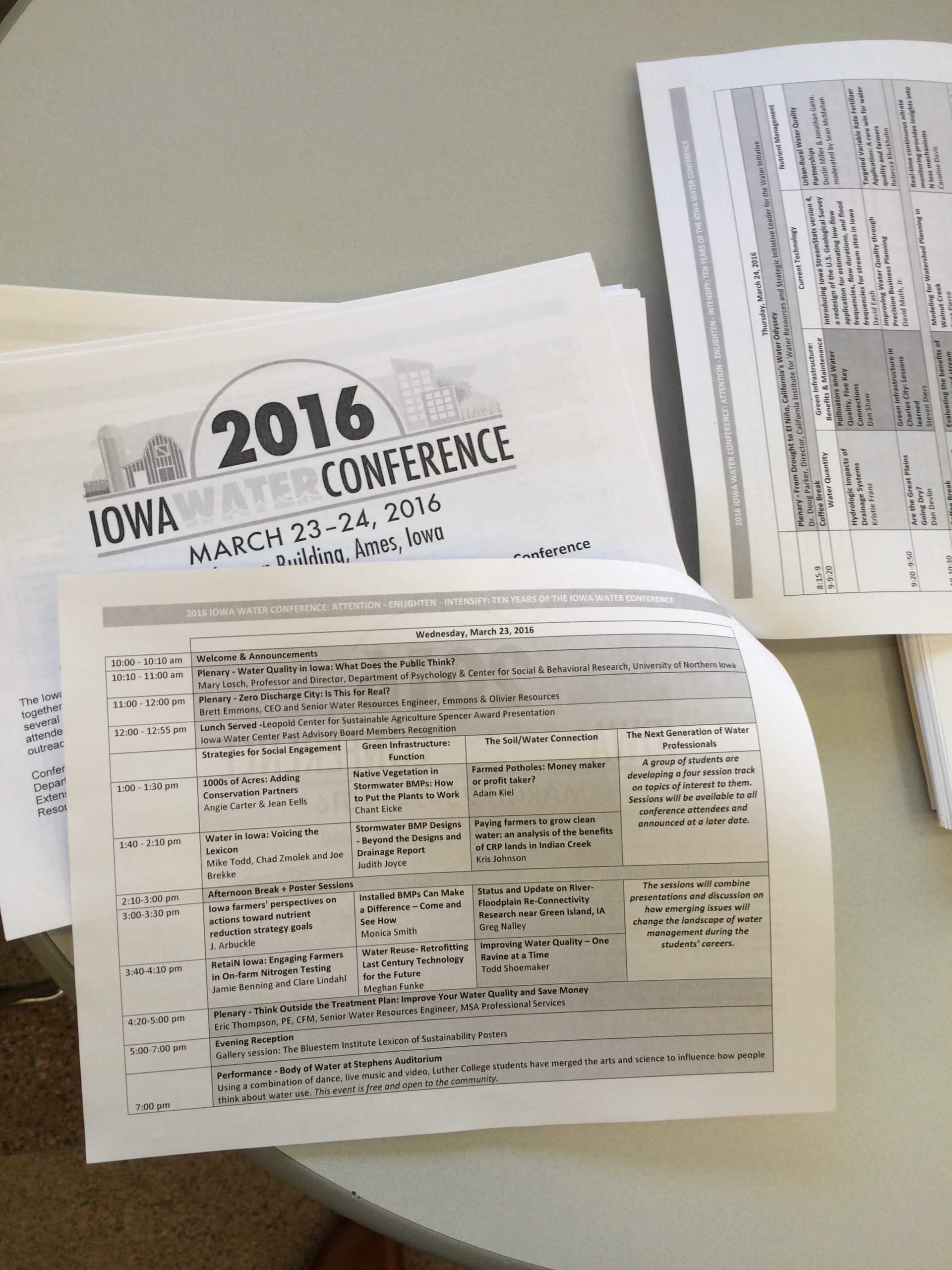On the twelfth [business] day of Christmas, the Iowa Water Center gave to me… lots more information on the “extra” happenings at the 2016 Iowa Water Conference. Registration for the 2016 conference will open in January. Stay tuned!
Poster Presentation & Student Contest
As in years past, posters will be displayed in the second floor lobby. Any attendee of the conference who would like to share information on their research or science-in-practice projects are welcome to submit an application. Registration to share a poster will be available online in January.
Poster authors are provided one 4’x8′ display board covered with white paper on top of a 6′ table. Posters should be set up Wednesday, March 23 between 8 and 10 a.m. Posters may be removed after 2:00 p.m. on Thursday, March 24.
Students are encouraged to entire their poster in the poster contest. First, second, and third place will receive cash awards. Contestants will be visited by judges between 2:10 and 3:00 p.m. on Wednesday to answer questions about their research.
Oral research presentations
Researchers wishing to present their recent work are invited to submit an abstract to Dr. Rick Cruse. Presenters will be given 30 minute slots during breakout session times at the conference (PowerPoint is available). Up to eight submissions will be accepted. Please send titles and abstracts to rmc@iastate.edu by February 1.
Iowa Water Priorities White Paper Session 2016
As a follow up to the 2015 white paper session, Dr. Rick Cruse will lead participants in a discussion to prioritize water resource management issues and opportunities in the state of Iowa. The white paper developed from the 2015 session was presented to the Water Resources Coordinating Council, published on the Iowa Water Center website and distributed at various conference. The 2016 white paper will receive additional strategic exposure. This session will take place at the close of the conference beginning at 3 p.m. on Thursday, March 24. Individuals wishing to participate but unable to attend may submit their comments during the conference or when filling out the post-conference evaluation.
2016 Photo Contest
The Iowa Water Conference Photo Contest, a perennial favorite, will return in 2016. Each photographer can enter two photos that contain a water component – this year, they are asked to include a human or animal/fish element to the photograph.
Full contest rules are available online. Winners will be announced during the luncheon awards session on Thursday, March 24.
We hope you’ve enjoyed the last twelve [business] days of Christmas. Happy holidays, and we’ll see you for registration in January!
